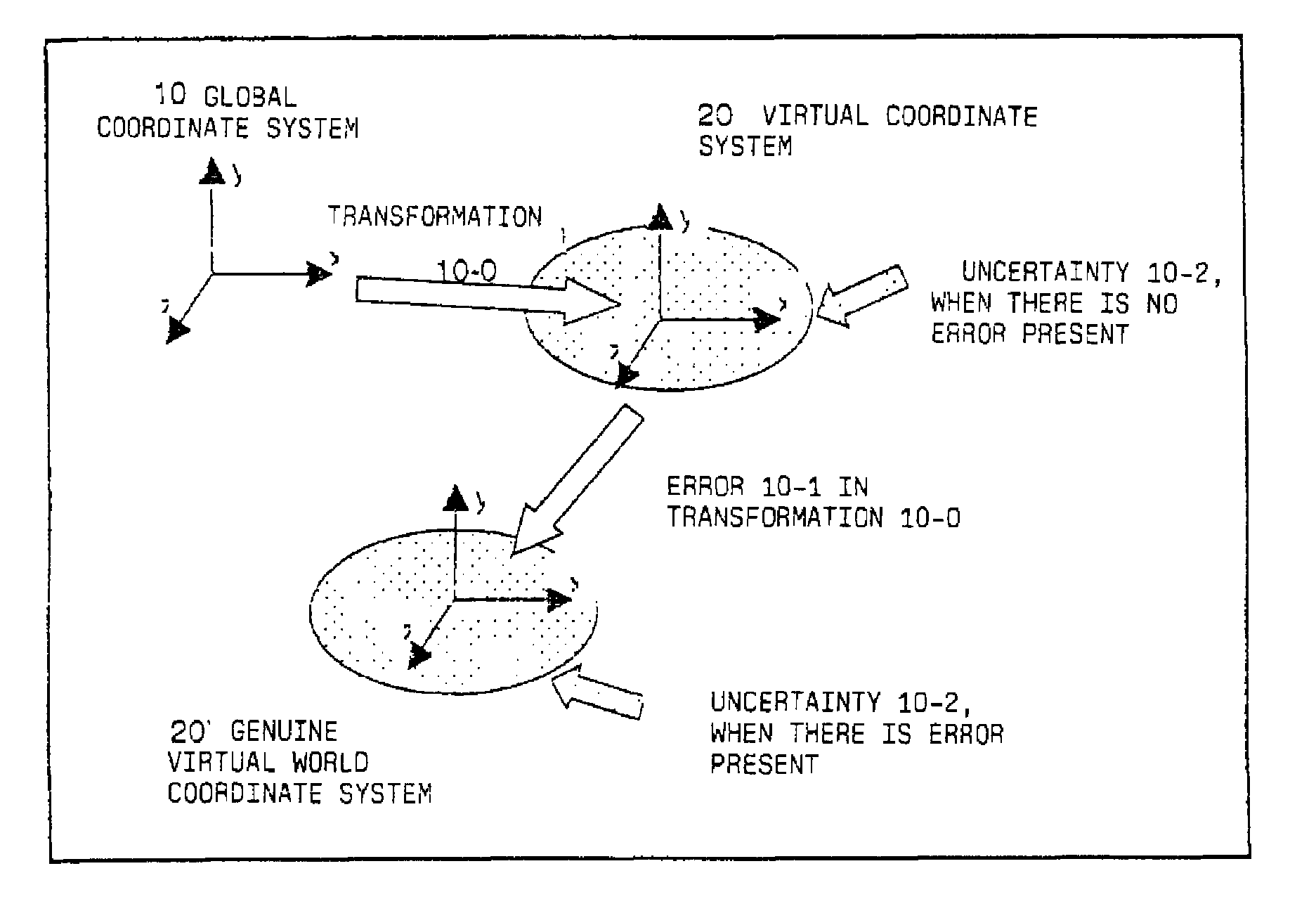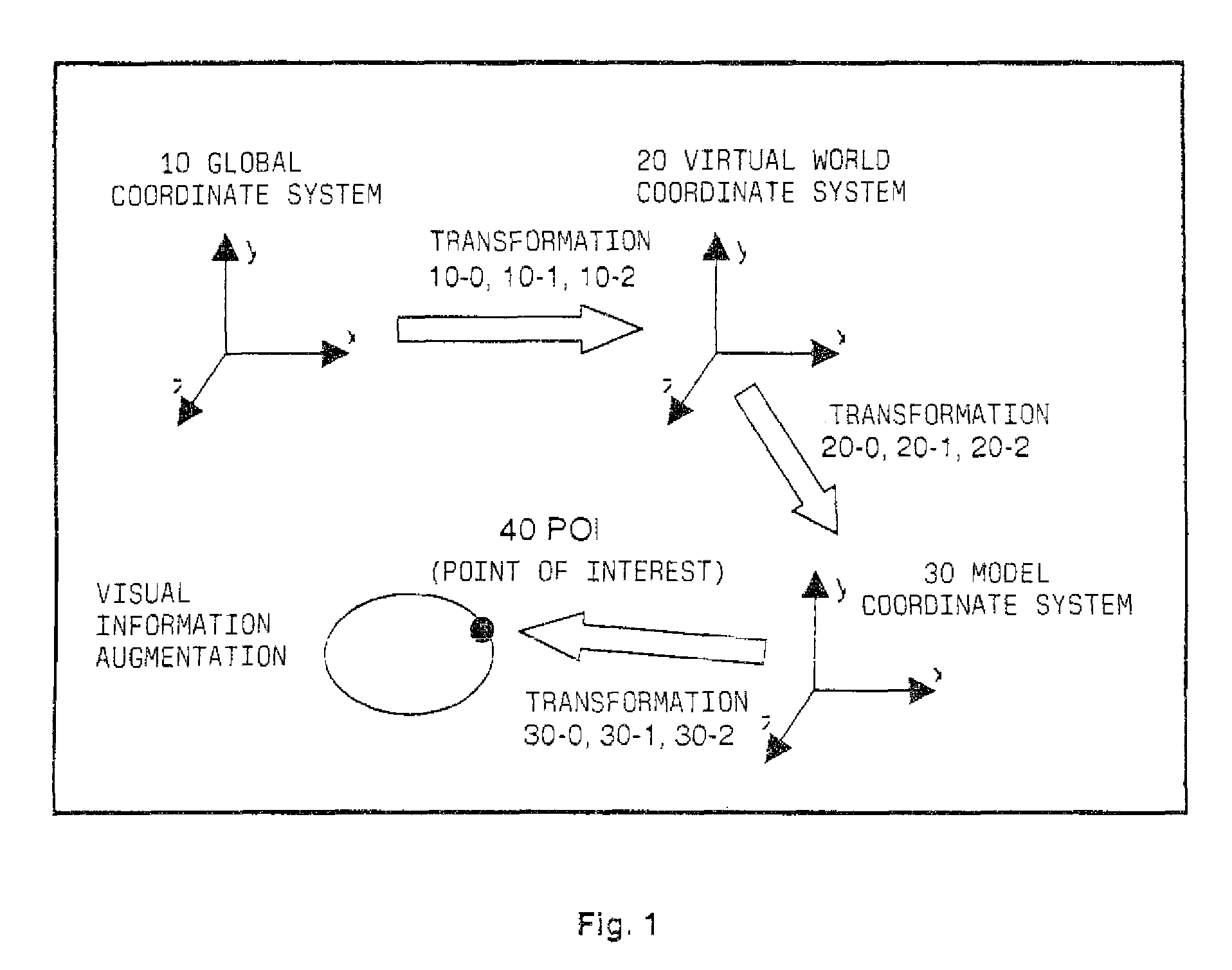Method of and system for determining inaccuracy information in an augmented reality system
a technology of augmented reality and information, applied in the field of method and system for determining inaccuracy information in an augmented reality system, can solve the problems of registration errors in augmented reality systems, inability to make statements on uncertainty, and inability to accurately position virtual objects in general
- Summary
- Abstract
- Description
- Claims
- Application Information
AI Technical Summary
Benefits of technology
Problems solved by technology
Method used
Image
Examples
Embodiment Construction
[0033]FIG. 1 shows a schematic outline representation of a process for positioning a data model of virtual information in an augmented reality system according to an embodiment. A camera takes a picture or image of the part of interest of the real environment, and the image is represented e.g. on a display device for having virtual information superposed thereon. As an alternative, it is also possible to make use of a see-through display device, as described hereinbefore, and by means of such a see-through display device the data model is blended or mixed with at least part of the real environment. Thus, the statements made in the following with respect to a camera apply analogously also for a see-through display device used instead of a camera. In this context, the term see-through calibration is used in general for optical see-through only, as the user in that event actually performs this calibration via see-through. In case of video see-through, the superposition takes place in a...
PUM
 Login to View More
Login to View More Abstract
Description
Claims
Application Information
 Login to View More
Login to View More - R&D
- Intellectual Property
- Life Sciences
- Materials
- Tech Scout
- Unparalleled Data Quality
- Higher Quality Content
- 60% Fewer Hallucinations
Browse by: Latest US Patents, China's latest patents, Technical Efficacy Thesaurus, Application Domain, Technology Topic, Popular Technical Reports.
© 2025 PatSnap. All rights reserved.Legal|Privacy policy|Modern Slavery Act Transparency Statement|Sitemap|About US| Contact US: help@patsnap.com



